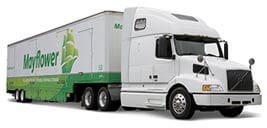METCALF MOVING BLOG
How to Pack a Kitchen for Moving: A Step-By-Step Guide
Whether you’re moving for a job or a new start, you have the same fear as everyone else who moves: losing valuable items due to damage during the move.
Some of the risk depends on the movers you hire. If you hire an experienced, reputable moving company, the chances for damage are low.
To improve your chances for a damage-free move even further, take a look at your packing skills. Especially for fragile items, smart packing makes all the difference.
Start with these tips for how to pack a kitchen for moving.
1. Get the Right Tools
If you haven’t moved in a long time, you probably plan to wrap your dishes in newspaper and cardboard boxes. However, newspaper is thin and can leave an ink residue on your hands and dishes.
Instead, gather packing items meant for dishes. Use packing paper and dish pack boxes. Regular cardboard boxes have only one layer of corrugated cardboard, but dish pack boxes have two layers. This double layer offers extra protection during the move.
Place a couple of layers of crumpled paper on the bottom of the box. Wrap each plate individually. Then wrap a group of three wrapped plates together. Place that group on its side on top of the crumpled paper. Fill in around the wrapped plates to make sure they fit snuggly.
For glassware, get glass pack kits with cell dividers and double-walled cardboard. These boxes are designed to separate and protect glassware and stemware.
Wrap the glasses in packing paper. Make sure to stuff the inside of the glass with paper to prevent crushing. Then place each glass in a separate cell.
These products protect your kitchen items and save you time in the packing process. After your move, they’re easy to recycle too.
2. Start Early
It’s easy to underestimate how much time it takes to pack your kitchen compared to other rooms. Most kitchen items are fragile, so you need to wrap or protect each one individually.
Fortunately, you can start packing weeks or months in advance. Begin with the items you don’t often use, like fine china, serving items, and lesser-used small appliances.
Work your way up from least-used to most-used items until moving day arrives.
3. Do Yourself a Favor with Labels
You probably already plan to label your kitchen boxes with “kitchen” and “fragile” to help the movers. Help yourself, too, by writing what’s in each box.
You won’t have time to unpack all your boxes right away, and you don’t want to go through each one to find the dishes you need. With detailed labels, you can see where your everyday items are right away.
4. Distribute the Weight Evenly
A common mistake when moving is putting all the dishes of one type in one box.
The problem with this is that your box of plates becomes extremely heavy. It may be heavy enough to break through the box. Use smaller boxes and vary the items in the box.
Focus on distributing the weight within each box. Reinforce the bottom of the box with plenty of tape. Place a thick protective layer of crumpled paper at the bottom of each box. Then place heavier items in first so that they are at the bottom.
After that, wrap lighter items and place those on top of heavier ones. Be sure to consider the overall weight of each box and not fill one with too many heavy things that make it difficult to carry. Separate your layers with pieces of cardboard for extra protection.
Packing Up and Moving Out
For more hands-on help, call our moving team to schedule your move.









